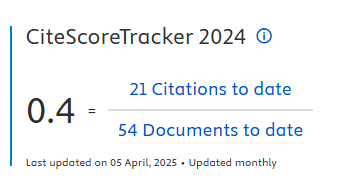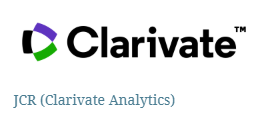Theory of constraints as a driver for frugal innovation in health
DOI:
https://doi.org/10.5585/iji.v10i4.21801Keywords:
Frugal innovation, Theory of constraints, Reasoning process, Oncological drugs, Health system.Abstract
Objective of the study: The objective of the research was to identify whether the application of the Theory of Constraints (TOC) reasoning process mobilizes frugal innovation in the process of distributing high value-added oncological drugs, in Brazil.
Methodology: Qualitative-descriptive research that, through the collection of primary and secondary data, was applied to content analysis with a priori categorization.
Originality/Relevance: The relevance of the research points to the complexity of the parties involved, responsibilities, flows, bottlenecks and losses involved in the distribution process of oncological drugs and the intervention specificities necessary for assertiveness in distribution.
Main Results: The alignment of TOC with frugal innovation was evidenced, with regard to the development, production and management of services that present resource constraints, avoiding unnecessary costs.
Theoretical/methodological contributions: As contributions to the study, the association and reinforcement in organizational theory and TOC tool with frugal innovation is pointed out, establishing an operational framework for the discussion and proposition of a future agenda on the use of tools that help the decision-making process, particularly in the health context.
Social/Management Contributions: The research provides insights into the use of tools associated with the development of frugal innovation in processes and services of government agencies with limited resources and limited budget.
Downloads
References
Agarwal, N. & Brem, A. (2012). Frugal and reverse innovation - literature overview and case study insights from a German MNC in India and China. Proceedings of the 18th International Conference on Engineering, Technology and Innovation. https://doi.org/10.1109/ICE.2012.6297683
Bardin, L. (2016). Análise de conteúdo. São Paulo: Edições.
Basu, R. R., Banerjee, P. M., & Sweeny, E. G. (2013). Frugal innovation: core competencies to address global sustainability. Journal of Management for Global Sustainability. https://doi.org/10.13185/JM2013.01204
Bhatti, Y. A.; Khilji, S. E. & Basu, R. (2013). Frugal innovation. Globalization, change and learning in South Asia. Oxford: Chandos Publishing.
Bhatti, Y. A. & Ventresca, M. (2013). How can ‘frugal innovation’be conceptualized? Available at SSRN 2203552. https://doi.org/10.2139/ssrn.2203552
Bianchi, C.et al. (2017). Healthcare frugal innovation: A solving problem rationale under scarcity condition. Techology in Society, 51: 74-80. https://doi.org/10.1016/j.techsoc.2017.08.001
Brasil. (1990). Lei nº 8.080, de 19 de setembro de 1990. Dispõe sobre as condições para a promoção, proteção e recuperação da saúde, a organização e o funcionamento dos serviços correspondentes, e dá outras providências. Diário Oficial da União - Seção 1 - 20/9/1990.
Brasil. (2004). Ministério da Saúde. Conselho Nacional de Saúde - CNS. Resolução nº 338, de 06 de maio de 2004. Aprova a Política Nacional de Assistência Farmacêutica. Diário Oficial da União 2004.
Brasil. (2009). Portaria GM/MS nº 2.981, de 26 de novembro de 2009. (Revogada pela PRT no 1554/GM/MS de 30.07.2013). Aprova o Componente Especializado da Assistência Farmacêutica. Diário Oficial da União 2009.
Brasil. (2013). Portaria GM/MS nº 1.554, de 30 de julho de 2013. Dispõe sobre as regras de financiamento e execução do Componente Especializado da Assistência Farmacêutica no âmbito do Sistema Único de Saúde (SUS).
Brasil. (2014). Ministério da Saúde. Secretaria de Ciência, Tecnologia e Insumos Estratégicos, Departamento de Assistência Farmacêutica e Insumos Estratégicos. Brasília: Ministério da Saúde, 2014. Componente Especializado da Assistência Farmacêutica: inovação para a garantia do acesso a medicamentos no SUS. Brasília: Ministério da Saúde.
Brasil. (2014). Portaria GM/MS nº 2.531, de 12 de novembro de 2014. Redefine as diretrizes e os critérios para a definição da lista de produtos estratégicos para o Sistema Único de Saúde (SUS) e o estabelecimento das Parcerias para o Desenvolvimento Produtivo (PDP) e disciplina os respectivos processos de submissão, instrução, decisão, transferência e absorção de tecnologia, aquisição de produtos estratégicos para o SUS no âmbito das PDP e o respectivo monitoramento e avaliação.
Brem, A. & Wolfram, P. (2014). Research and development from the bottom up -Introduction of terminologies for new product development in emerging markets. Journal of Innovation & Entrepreneurship, 3(1): 1–22. https://doi.org/10.1186/2192-5372-3-9
Correr, C.J., Otuki, M.F., & Soler, C. (2011). Assistência farmacêutica integrada ao processo de cuidado em saúde: gestão clínica do medicamento. Revista Pan-Amazônica de Saúde, 2(3): 41-49. http://dx.doi.org/10.5123/S2176-62232011000300006
Desa, G. & Basu, S. (2013). Optimization of bricolage? Overcoming resource constraints in global social entrepreneurship. Strategic Entrepreneurship Journal. 7: 26-49. https://doi.org/10.1002/sej.1150
Goldratt, E. M. (2007). The theory of constraints and its thinking processes: a brief introduction to TOC. Connecticut: Goldratt Institute.
Gonçalves, A. A. (2004). Gestão da capacidade de atendimento em hospitais de câncer.
Gupta, B.& Thomke, S. (2018) An exploratory study of product development in emerging economies: evidence from medical device testing in India. R&D Management, 48(3): 485-501. https://doi.org/10.1111/radm.12324
Dissertação (Doutorado em engenharia de produção). Rio de Janeiro: COPPE/UFRJ. Inesc. (2020). Orçamento Temático de Acesso a Medicamentos. Brasília. 28 p. Disponível em: https://www.inesc.org.br/wp-content/uploads/2020/12/OTMED-2020.pdf
Kuo, A. (2016). Harnessing frugal innovation to foster clean technologies. Clean Technologies and Environmental Policy. 19: 1109–1120 https://doi.org/10.1007/s10098-016-1304-y
Lacerda, K. C. (2016). Inovação em produtos para a base da pirâmide: evidências em empresas brasileiras. Dissertação (Mestrado em Administração) – Programa de PósGraduação em Administração. Paraíba: Universidade Federal da Paraíba.
Lakatos, E. M. & Marconi, M. A. (2010). Fundamentos da metodologia científica. 7. ed. São Paulo: Atlas.
Lelived, A. & Knorringa, P. (2018) Frugal Innovation and Development Research. European Journal of Development Research, 30 (1): 1–16. https://doi.org/10.1057/s41287-017-0121-4
Ministério da Economia. (2019). Relatório de Avaliação Componente Especializado da Assistência Farmacêutica (CEAF). Brasília. 116 p. Recuperado de: https://www.gov.br/economia/pt-br/acesso-a-informacao/participacao-social/conselhos-eorgaos-colegiados/cmap/politicas/2019/gastos-diretos/relatorio-de-avaliacao-cmag-2019-ceaf
Nodari, C. H., Almeida Guimarães, L. G. de, Veiga Neto, A. R., Olea, P. M., & Barros Rasia, I. C. R. (2019). Dynamics of Actors in Innovation in Public Health Services: Brazilian Experience. Journal of Health Management, 21(1), 1–17. https://doi.org/10.1177/0972063418822605
Phipps, B. (1999). Hitting the bottleneck. Health Management: United Kingdon.
Prabhu, G. N. & Gupta, S. (2014). Heuristics of Frugal Service Innovations. In: Portland International Conference Of Management Of Engineering And Technology.
Prabhu, J. (2017). Frugal innovation: doing more with less for more. Philosophical Transactions: Mathematical, Physical and Engineering Sciences, 375: 2095. https://doi.org/10.1098/rsta.2016.0372
Radjou, N.; Prabhu, J. (2014). Frugal Innovation: How to Do More with Less. London: Profile Books.
Rao, B. C. (2013). How disruptive is frugal? Technology in Society, 35: 65-73. https://doi.org/10.1016/j.techsoc.2013.03.003
Rao, B. C. (2018). The science underlying frugal innovations should not be frugal. Royal Society Open Science, 6: 180421. https://doi.org/10.1098/rsos.180421
Santos, G. L. S. (2019). Adoção da Tecnologia Blockchain no processo de gestão, aquisição e disponibilização de medicamentos oncológicos de compra centralizada pelo SUS: Um estudo de viabilidade. 2019. Trabalho de Conclusão de Curso (Graduação em Sistemas da Informação) – Universidade Feevale, Novo Hamburgo, RS.
Secretaria Estadual de Saúde do Paraná. (2019). Medicamentos Oncológicos. Curitiba -PR. Recuperado de: https://www.saude.pr.gov.br/Pagina/Medicamentos-Oncologicos#
Silva, F. L., Genro, J. P. & Kipper, L. M. (2015). A Teoria das Restrições e a Gestão de Processos: Uma Apreciação Crítica da Literatura. Anais... XXXV Encontro Nacional de Engenharia de Produção.
Tiwari, R., Kalogerakis, K. & Herstatt, C. (2016). Frugal Innovations in the mirror of scholarly discourse: Tracing theoretical basis and antecedents. R&D Management Conference Fron Science to Society: Innovation and Value Creation.
Vidal, S. & Wanke, P. (2009). Teoria das Restrições: Principais conceitos e aplicação prática. Recuperado de http://conic-semesp.org.br/anais/files/2016/trabalho-1000023268.pdf
Wanderley, C. N. & Cogan, S. (2012). Árvore da Realidade Atual, Diagrama de Dispersão de Nuvem e Árvores de Realidade Futura: Aplicação em uma Bateria de Escola de Samba. Revista ConTexto, Porto Alegre, 12(21): 41-58.
Weyrauch, T. & Herstatt, C. (2016). What is frugal innovation? Three defining criteria. Journal of Frugal Innovation, 2 (1). https://doi.org/10.1186/s40669-016-0005-y
Zeschky, M., Widenmayer, B., & Gassmannhart, O. (2011). Frugal innovation in emerging markets. Research-Technology Management, 54 (4): 38-45. https://doi.org/10.5437/08956308X5404007
Downloads
Published
How to Cite
Issue
Section
License
Copyright (c) 2022 Cristine Hermann Nodari, Karen Thais Alves, Luciane Lutz, Cristiane Froehlich

This work is licensed under a Creative Commons Attribution-NonCommercial-ShareAlike 4.0 International License.
- Abstract 834
- PDF 562











